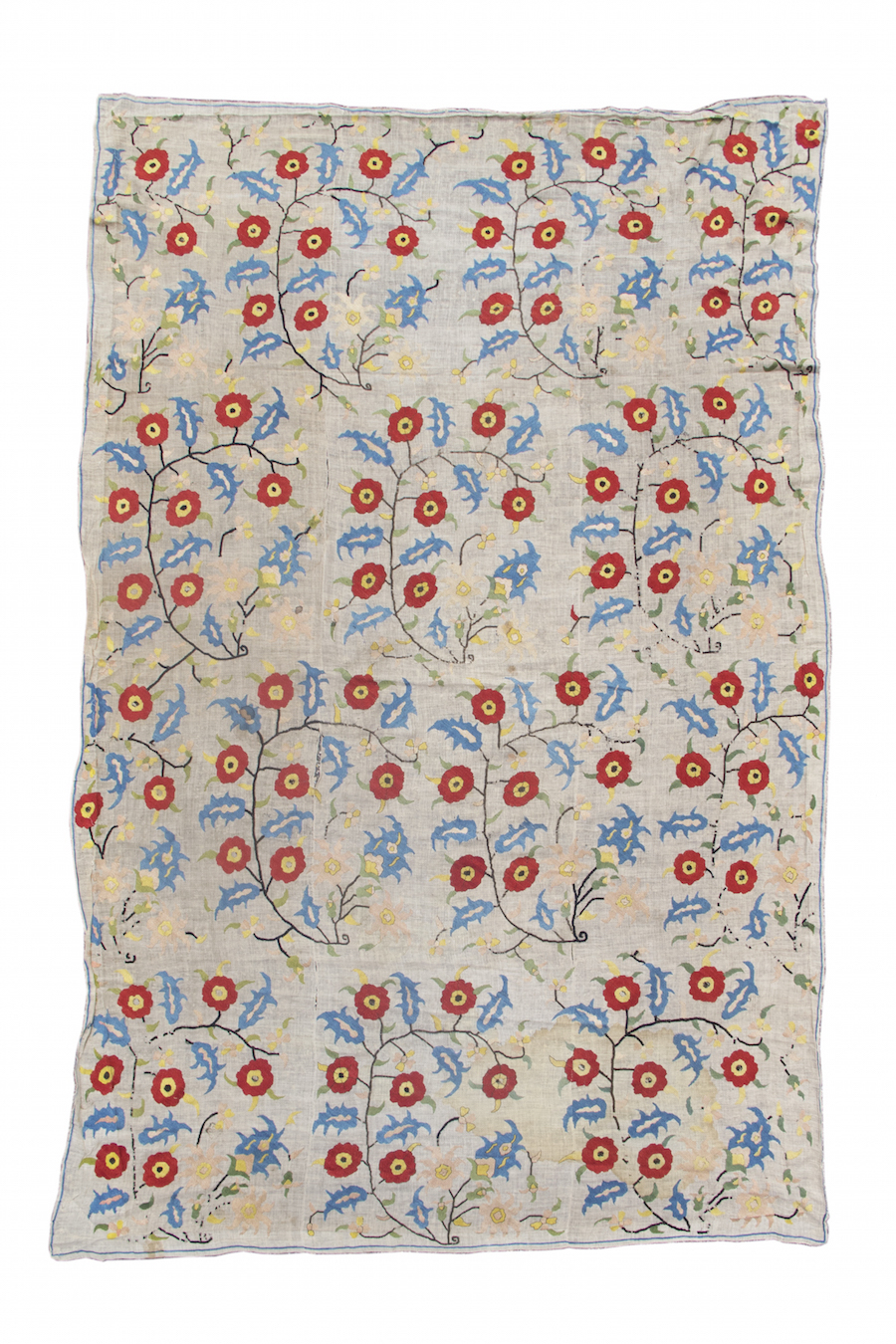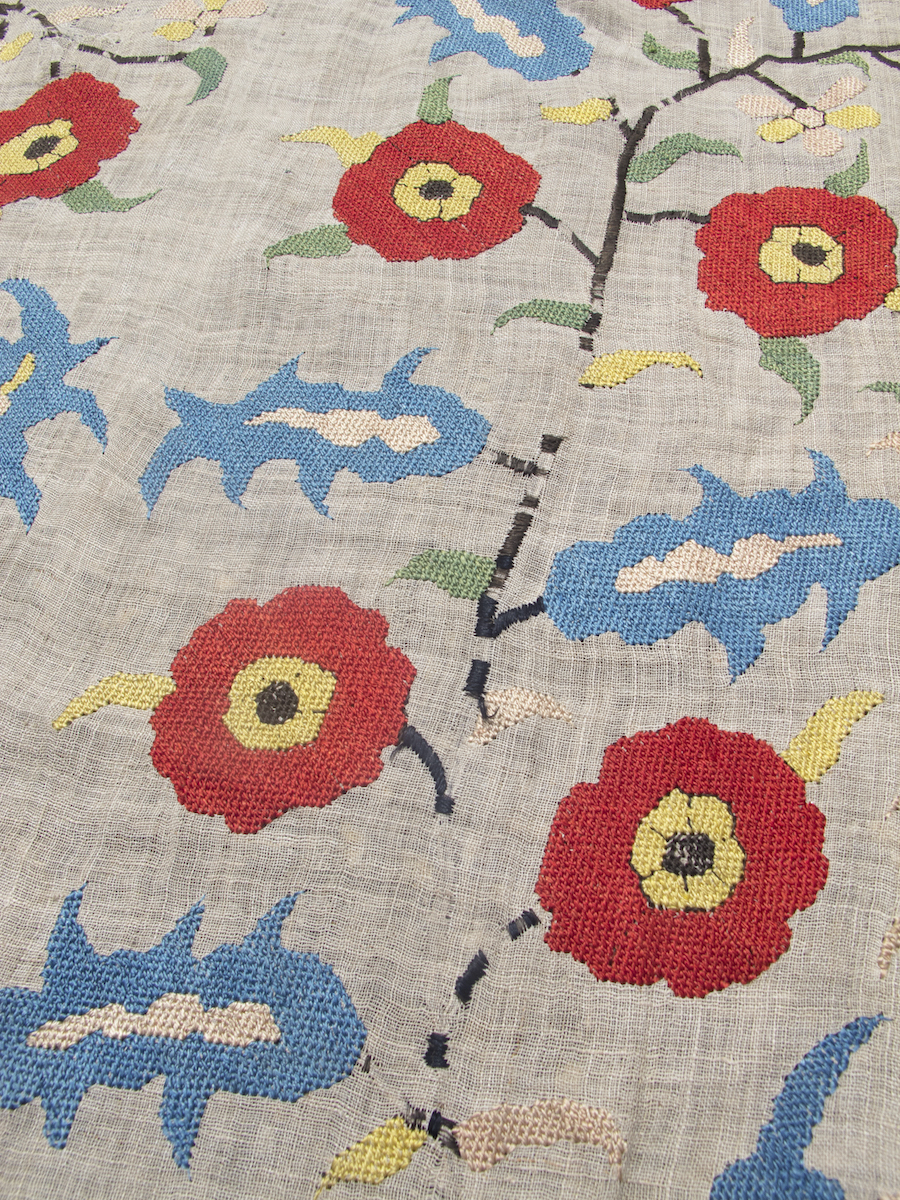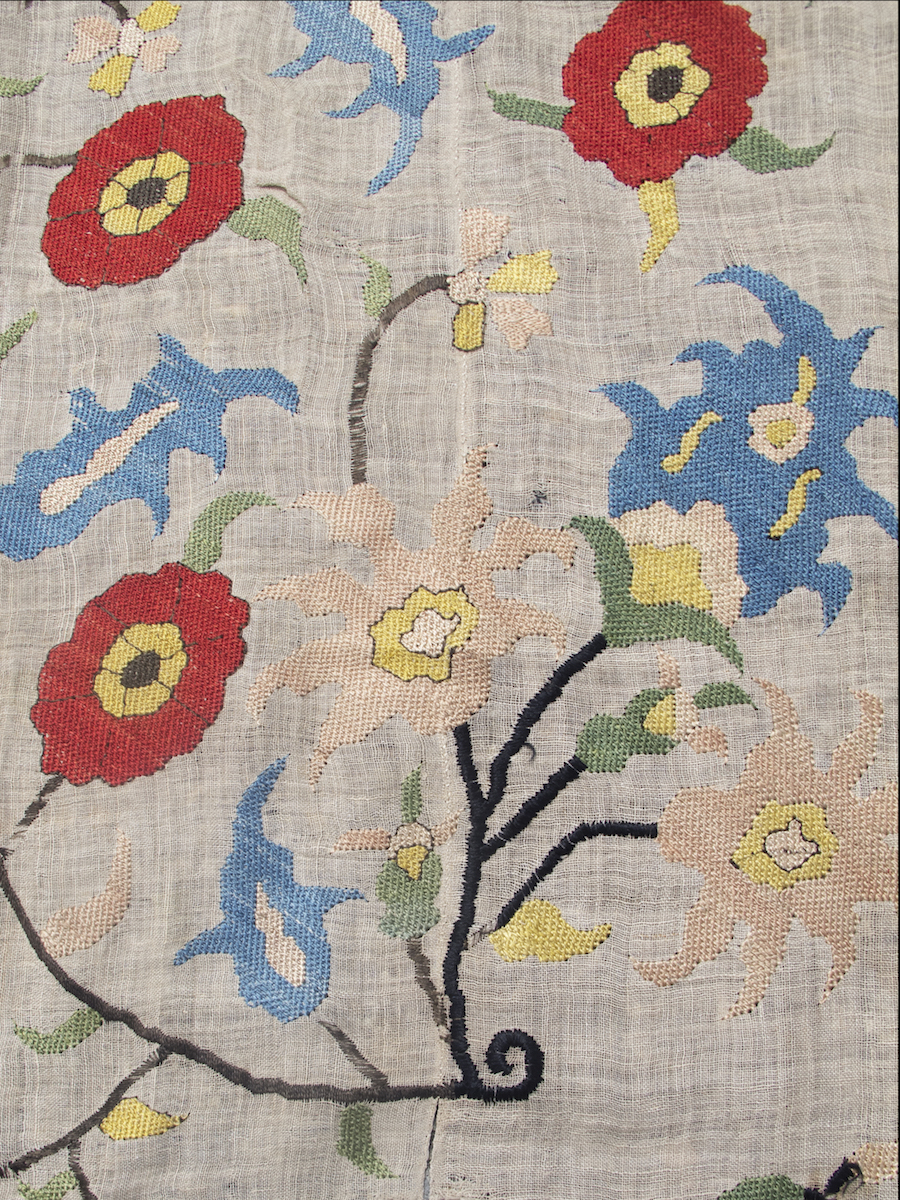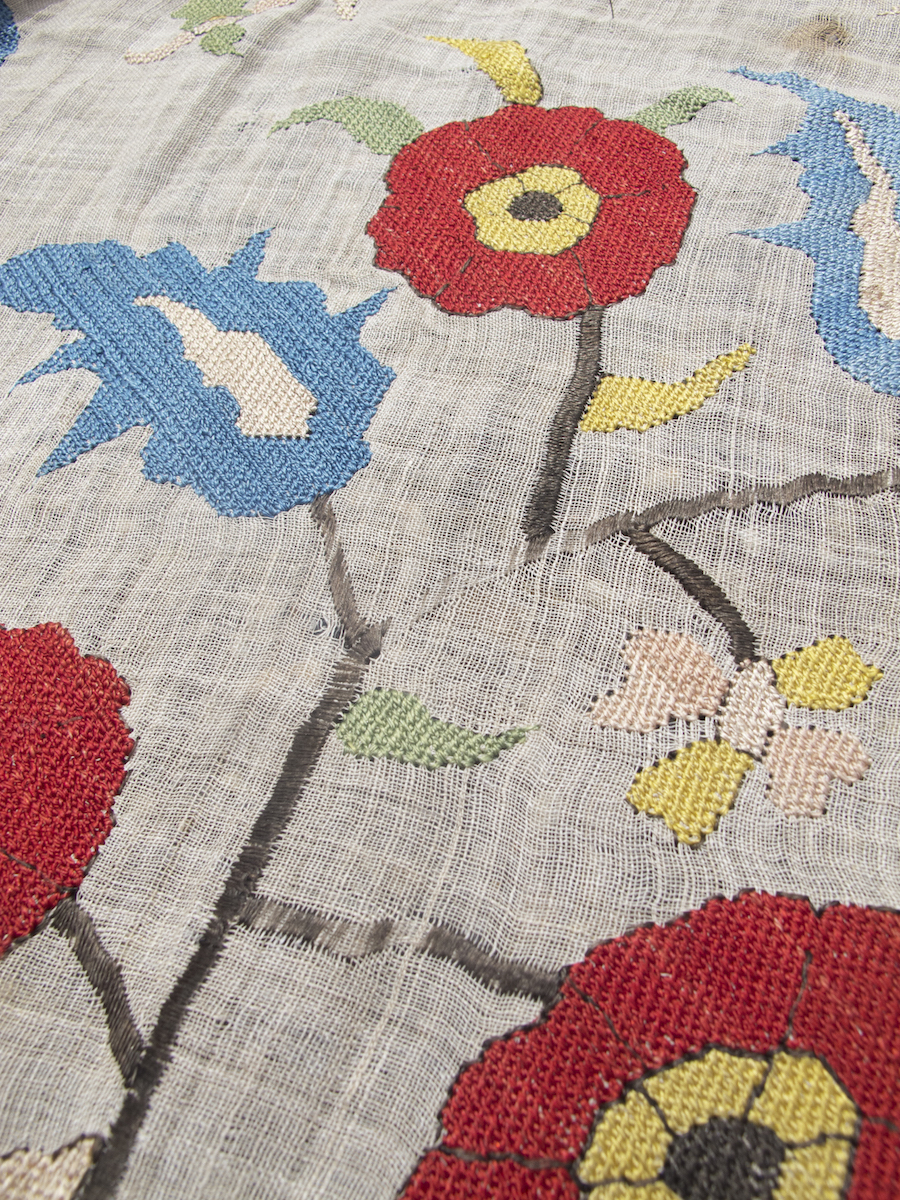Ottoman embroidery
$13,500.00
Availability: In stock
The rich and diverse weaving tradition of the Ottoman Empire is well known. Anatolian carpet weaving can be traced back over half a millennium and is arguably much older. Likewise, fine silk weaving is known from the time of the Byzantine empire. Ottoman velvet was a luxurious commodity traded throughout the Mediterranean from as early as the 15th century. Less well known, but equally accomplished, is the Ottoman tradition of embroidery. This remarkable piece uses silk floss and was probably embroidered in western Anatolia in the 18th century. Like related Near Eastern and Central Asian embroidered textiles, it is composed of several strips (probably linen). The artist first drew the design, then each individual panel was embroidered before being assembled. Turkish embroidery such as this generally reflected models coming from the luxury and court textiles and decorative arts of contemporaneous and earlier periods. While this piece was most likely made for a local market, the flowering repeat paisley, or ‘boteh,’ pattern stems from classical Ottoman textile design of the 17th century. These 17th century motifs were likely inspired from persiante designs of that period. Over the centuries, embroideries of this age were often disassembled and survive only as fragments. Fortunately, this is a complete piece.




